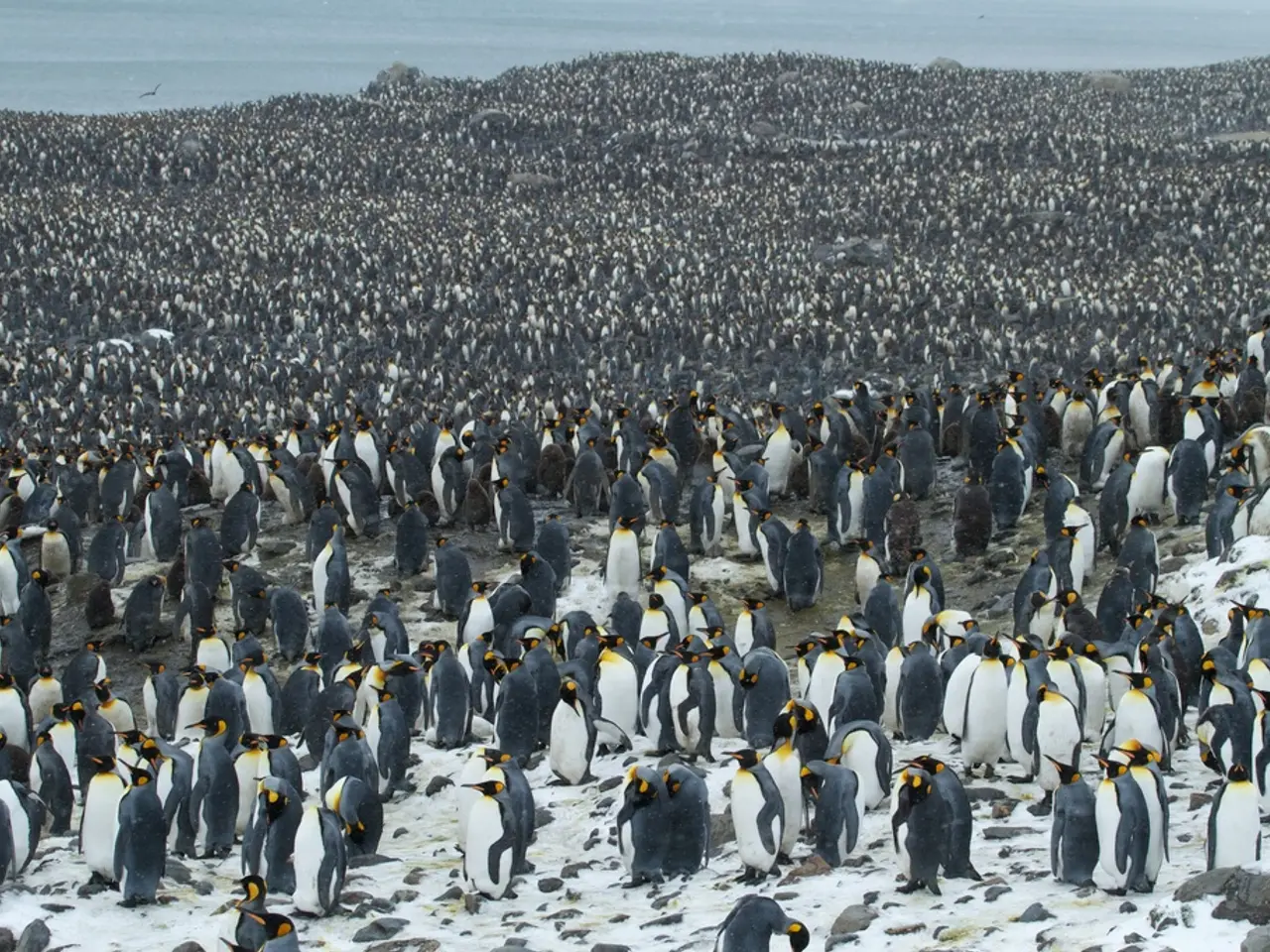Life and Job Experience in Antarctica's Unique Environment
In the heart of the world's coldest continent, the Amundsen-Scott South Pole Station stands as a beacon of human resilience and scientific exploration. While many may associate Antarctica with scientists and engineers, the reality is that a diverse range of roles are essential for the daily functioning and safety of Antarctic missions.
Located in the stark, bleak landscape of the South Pole, the station is characterised by rippling crusty snowdrift formations, a stark blue sky, and few clouds. The sun is up 24 hours a day, rotating in the sky, and the wind always blows in the same direction. Despite these challenging conditions, the station is home to a vibrant community of individuals who play crucial roles that extend beyond scientific research.
One such individual is Kiell Kosberg, a blogger from Minneapolis, Minnesota, who spent two summers working in Antarctica at a science base. Kiell's experiences provide a unique insight into the variety of non-scientific roles available in this remote and inhospitable environment.
Common jobs for non-scientists working in Antarctica primarily focus on operational, technical, and support roles. These roles include maintenance technicians, operations support staff, technical and IT positions, expedition guides and activity leaders, crew and hotel staff, and citizen science programme participants.
Maintenance technicians, such as plumbing and mechanical maintenance technicians, ensure that facilities and infrastructure remain operational in harsh conditions. Operations support staff manage logistics, supplies, and day-to-day coordination for scientific and expedition activities. Technical and IT positions provide critical computing and communications support given the remote location. Expedition guides and activity leaders are involved with tourism and expeditions, while crew and hotel staff provide essential hospitality and general support.
Citizen science programmes offer opportunities for individuals with an interest in the environment and exploration to participate in data collection and environmental monitoring alongside researchers. These opportunities are often linked to tourism expeditions rather than formal employment.
Kiell worked as a General Assistant and a Materials Person on the Antarctica Base, where they spent a lot of time shovelling snow and chipping mucky ice off the frozen metal floor. They also learned to drive heavy equipment as part of their job training and dismantled, inventoried, and rebuilt an outdoor storage berm using heavy equipment.
Life on the South Pole can be challenging, with temperatures ranging from -50F with -80 windchill to +10F during summer. Despite the harsh conditions, the base offers a range of activities for fun, including sports, dance parties, language classes, photography seminars, movie nights, open mic performances, pub trivia, and science lectures.
The workday is 7:30 to 5:30 (New Zealand time) for most departments, six days a week. Many people work a lot of overtime. The base also needs logistics personnel to receive and deal with incoming cargo, heavy equipment operators, and a heavy vehicle shop to maintain that equipment. There's a waste crew whose job is to sort, recycle, process, and package the station's collective waste.
Kiell's top tip for someone heading to Antarctica is to bring lots of socks. Working in Antarctica during winter can be particularly challenging, with ambient temperatures getting down to -100F and windchills at -125F. However, for those who are up for the challenge, the rewards are truly unique.
In the winter, members of the Antarctic community take part in the 300 Club, which involves sitting in a sauna and running outside naked. This quirky tradition is just one of many that make working in Antarctica an unforgettable experience.
In conclusion, while many Antarctic jobs are science-related, there is a variety of non-scientific roles essential for logistics, maintenance, operations, and expedition support. These roles allow individuals without scientific backgrounds to contribute significantly to Antarctic missions and expeditions. If you're looking for a unique and challenging adventure, consider applying for a role in Antarctica. Just don't forget to pack lots of socks!
- Kiell Kosberg, a blogger from Minneapolis, Minnesota, gained unique insights into non-scientific roles in Antarctica while working as a General Assistant and a Materials Person at a science base.
- Maintenance technicians, such as plumbing and mechanical maintenance technicians, and citizen science programme participants are among the non-scientists working in Antarctica, ensuring that facilities, infrastructure, data collection, and environmental monitoring remain operational in harsh conditions.
- Despite the challenging conditions, living in the South Pole offers a diverse lifestyle with activities for fun, such as sports, language classes, photography seminars, movie nights, and science lectures.
- One quirky tradition that makes working in Antarctica an unforgettable experience is the 300 Club, where members sit in a sauna and run outside naked during the winter.






